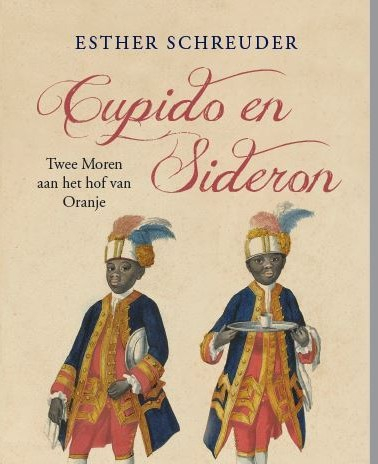Jan van Bijlert
Jan van Bijlert 1597/98 –1671
Caspar
1640 –1650
Oil on panel, 40 x 32 cm
Private collection
As an individual painting this Black King is typical of Van Bijlert, who painted a number of half-length figures during his life. Jan van Bijlert, a pupil of Abraham Bloemaert, was one of the Utrecht Caravaggists. Later in his career he started to work in a more classicist style.
Van Bijlert probably did not paint this King from a living model as he preferred to work with idealised, standard figures. This is evident in the King’s headgear. Van Bijlert thus fits into a pictorial tradition which dates from the early sixteenth century. A similar crown with turban combination can be seen, for example, in Jan van Scorel’s Adoration from circa 1530, in the Centraal Museum in Utrecht.
Van Bijlert, however, is more likely to have imitated the example of Bloemaert, rather than any sixteenth-century artist, for in 1623 and 1624 his master had painted two similar Kings wearing a turban, coronet and brooch set with a precious stone as an extra ornament on the turban.
A strikingly naturalistic element in Van Bijlert’s painting is the King’s frizzy hair pokingout from under the turban.The artist paid a great deal of attention to his figure’s face and clothing.
The King wears a pearl in his ear and a broad rope of pearls over his chest.
White men were seldom depicted wearing pearls which were the exclusive attributes of white women and blacks, both men and women.
A rare exception: King Charles I
Symbols of earthly wealth and earthly love, pearls could also signify piety which Bijlert’s Black King’s pearls probably represent, given the context in which they appear, an Adoration of Christ. They also create a magnificent contrast with the King’s dark skin.
This painting once formed part of a series of three pictures. Van Bijlert produced a number of series which must have brought him success. Two intactseries are still known.
Esther Schreuder in the Black is beautiful,Rubens to Dumas Catalogue (2008)
Literature
Bergstrom 1972, pp. 38-45; Huys, Janssen 1998, pp. 95-96, 104; exhibition catalogues: Rotterdam 1999
More on pearls: http://www.vam.ac.uk/content/exhibitions/exhibition-pearls/about-the-exhibition/
About me
In 2008 I was guest curator of the exhibition Black is beautiful. Rubens to Dumas. Important advisors: Elizabeth McGrath (Rubens and colleagues, Warburg institute Image of the Black in Western Art collection), Carl Haarnack (slavery in books), Elmer Kolfin (slavery in prints and paintings) en Adi Martis (contemporary art). Gary Schwartz made his research for The Image of the Black in Western Art available to me.

In 2014 my essay ‘Painted Blacks and Radical Imagery in the Netherlands (1900-1940)’ was published in The Image of the Black in Western Art Volume V (I). (ed. David Bindman, Henry Louis Gates jr.)

In 2017 I published a book about the black servants at the Court of the Royal Van Oranje family. More than a thousand documents have been found about their lives. (only in Dutch)

All photos on this site are not intended for any commercial purpose. I have tried to trace all the rules and rights of all images. As far as I know, these images can be used in this way. If you ar a copyright holder and would like a piece of your work removed or the creditline changed then please do not hesitate to contact me.
estherschreuderwebsite@gmail.com




